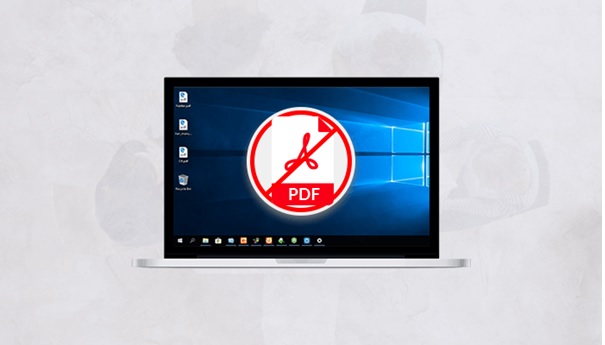The term “Cost of Goods Sold” refers to the direct cost incurred to sell the products by a business. It is also known as the “Cost of Sales”. It not only costs but also includes material, labor, and production-related expenses for the said product. However, the Cost of Goods Sold does not include some indirect costs such as operating expenses, marketing, and overhead costs.
It is important to analyze what are the particular costs which have incurred related to the sale of the product. For example, if a company is selling furniture, it is important to note of there has been marketing cost included in case there are no products being sold. In that such, one can include the marketing and sales costs in a separate section in the accounting income statement.
The cost of Goods Sold also depends on the e-commerce business model. For example, an e-commerce company’s Cost of Goods Sold includes the cost of the products from the supplier but excludes the shipping cost as the products are being delivered by the supplier to the end consumer directly.
On the other hand, an e-commerce warehousing seller may need to include the cost of shipping from the supplier to the warehouse (the provisions also include a home-based seller). However, the shipping cost to the end consumer does not form a part of the Cost of Goods Sold.
If you want to save time in account numbers or to calculate COGS easily. You can get help from our Ecommerce Bookkeeping Service.
How to Calculate Cost of Goods Sold (COGS)
The calculation of the Cost of Goods sold for any e-commerce company is considered a challenging task. The calculation of COGS is not easy or simple as the cost per unit is paid to the vendors. Additionally, it is also a bigger challenge how to calculate the number and how automate it so that it can be scaled.
Firstly, it is necessary to think about how you can calculate the cost of inventory accurately and later the Cost of Goods Sold. It is always a fact that costs incurred while producing the product will be included in the product cost i.e. on the inventory balance sheet. Ultimately, it will be included in the Cost of Goods Sold and will reflect in the income statement as well. Getting the correct number is very crucial knowing the gross margin which is an important number not only for an e-commerce company but also for any company or business. Most businesses fail as a result of low margins. Considering the same, the following are elements that will be included or excluded from the Cost of Goods Sold;
What is included in the Cost of Goods Sold (COGS)?
The following are some of the elements which are included in the Cost of Goods Sold;
- The Product Cost: the cost that one pays to the vendor in order to sell the products
- Duties and Fees: Any cost incurred to get the product to the end customer
- Freight In: The warehouse costing when the products were at the warehouse
What is excluded in the Cost of Goods Sold (COGS)?
The following are some of the elements which are excluded from the Cost of Goods Sold;
- Tooling Fees: the costs incurred for tooling of the products
- Research and Development cost: The costs incurred for research and development of the products prior to their
- Freight out: The cost paid to ship the products to the consumers.
The Formula to Calculate Cost of Goods Sold
In order to calculate the cost of goods sold formula, the starting inventory will be any inventory left from the last accounting period. Such cost of inventory must be added to the total cost of the inventory which was bought during the current accounting period. Then, deduct the cost of unsold inventory left at the end of the accounting period. It is to be noted that an accounting period may not be necessarily a year as it may be a month or a quarter. The formula for the calculation of the Cost of Goods Sold is as follows;
Cost of Goods Sold = Starting Inventory + Purchase made during the year – Leftover Inventory/Ending Inventory
Illustration
Let’s assume an e-commerce company records its inventory not on an accounting period basis but on a calendar year basis. Considering the same, It will start the inventory recording on 1st January and on 31st December.
Further, if the company has an inventory of $12,000 at the beginning of the year and later purchased another inventory worth $7,000 during the year and ends up having leftover inventory worth $3,000. Then the formula to calculate the Cost of Goods Sold will be the following;
Cost of Goods Sold = Starting Inventory + Purchase made during the year – Leftover Inventory/Ending Inventory
Cost of Goods Sold = $12,000 + $7,000 – $3,000
= $16,000
Calculator: Cost of Goods Sold
When you want to calculate the Cost of Goods Sold, you can either hire an experienced accountant or will do it on your own. If you are calculating the Cost of Goods Sold on your own and you are unsure about its authenticity, you must take the help of a professional who can calculate your Cost of Goods Sold or use an online calculator or tool to calculate the same for you. For any of the methods you opt for, you still have to be aware of the formula for the calculation of the Cost of Goods Sold so that you can give correct information to the financial representatives. The calculation of the Cost of Goods Sold must be accurate at 100% as any sort of wrong or miscalculation can ruin the calculation of profit.
As an online seller, it provides an advantage to have access to some good online tools that can be used to calculate the Cost of Goods Sold automatically. If one uses the Cost of Goods calculator, then one has to simply provide the number and the calculation will be made automatically. However, before adopting the online calculator, one must decide on the accounting method that will be used to calculate the Cost of Goods Sold. The details of the same are furnished below;
- Weighted Average: It is the method where the total cost of the goods is divided by the available number of units. Then, it is multiplied the number by the actual number of units sold to achieve the average cost of goods sold
- LIFO (Last-in-First-Out): In LIFO, the cost of goods sold is calculated based on the products that were purchased or produced from the supplier or manufacturer last.
- FIFO (First-in-First-Out): In FIFO, the cost of goods sold is calculated based on the products that were purchased or produced from the supplier or manufacturer first.
Illustration
For example, a company is engaged in selling hairbrushes, and the cost of the first 10 hairbrushes purchased from the supplier is worth $2 each. Due to the increase in the cost of plastics, the next 2 hair brushes purchased cost $2.50. During this period the company was able to sell only 4 hairbrushes.
FIFO
With the use of the FIFO cost of goods sold method, the Cost of Goods Sold will be $8 ($2 x 4 = $8).
LIFO
On the other hand, with the use, of LIFO cost of goods sold, the Cost of Goods Sold will be ($2.50 x 2) + ($2 x 2) = $9.
Weighted Average
With the use of the weighted average method, the Cost of Goods Sold will be ($15/7) x 4 =$8.50.
Secondly, one must also consider which tracking method for inventory will be used for the Cost of goods Sold. A couple of methods for the same are mentioned below;
Method 1 – Manual Tracking
This method is generally recommended as it is considered a reasonable method in case there is only less number of products with which costs do not fluctuate. Inventory on hand can be calculated easily and periodically and the difference between the starting and ending cost of inventory will be added to the Cost of Goods Sold. It is to be noted that this method is not scalable and must not be used by a business growing up.
Method 2 – Utilization of a Cloud-Based Inventory Application
There are many cloud-based application available in the market and the best one among them depend upon various factors. These Applications may do a lot or may not. The basic use of these Applications is to reconcile the sales channel deposits within the accounting system. This in itself is a very time-consuming process.
Cost of Goods Sold and Profitability
It is important to keep track of the Cost of Goods Sold to make sure that a business has profits remaining. Generally, profit is calculated by deducting expenses from the revenue generated. Thus, if the calculation of the Cost of Goods Sold is wrong or erroneous, ultimately it will hamper the profitability assessment and ultimately it will reflect inaccurate profit. The role of the Cost of Goods Sold is important in Gross Profit calculation. A formula to calculate the Gross Profit and Net Profit is provided below;
Gross Profit = Gross Revenue – Cost of Goods Sold (COGS)
Net Profit = Revenue – Cost of Goods Sold (COGS) – Expenses
Conclusion/ Bottom Line (Why It’s Important To Calculate Cost of Goods Sold)
Despite a lot of importance the Cost of Goods Sold for an e-commerce company, most store owners may lack the visibility that is required to make a significant decision using the Cost of Goods Sold. Accurate Cost of Goods Sold data helps the company to fix the price of the products in a strategic manner and according to the estimated profitability.
Understanding the cost of goods sold also helps eCommerce businesses to make strategies considering the best market products based on the profit margin. For example, a dress with a 10% margin can be a good option for a scalable email marketing campaign. On the other hand, a higher-end bag with a 70% margin can be a good option for an expensive marketing campaign including paid social media advertisements.
Additionally, e-commerce companies can use the cost of goods sold to fix the price of the product more effectively and efficiently. So that, the available margin can be used to pay the operating expenses related to the maintenance and scaling of the business. Some examples of such operating expenses include development expenses, web hosting fees, cost of maintenance, etc.



